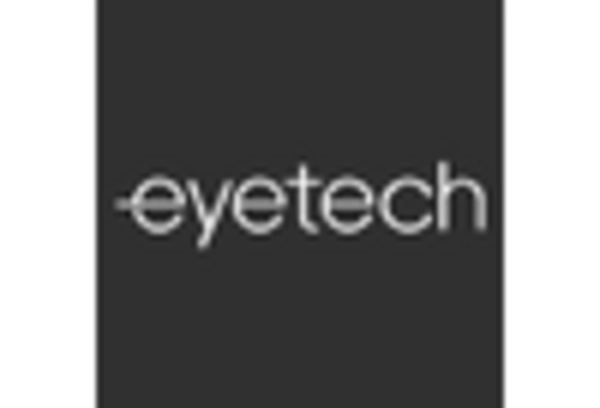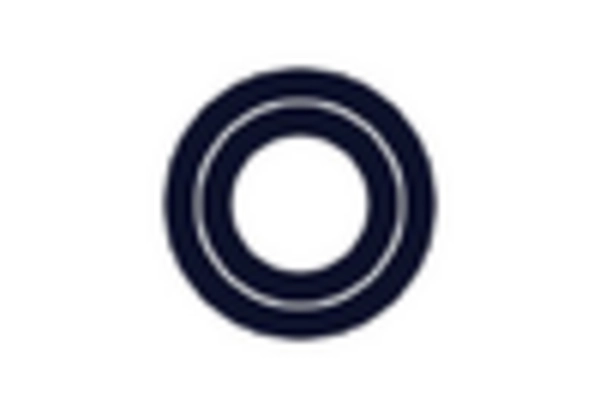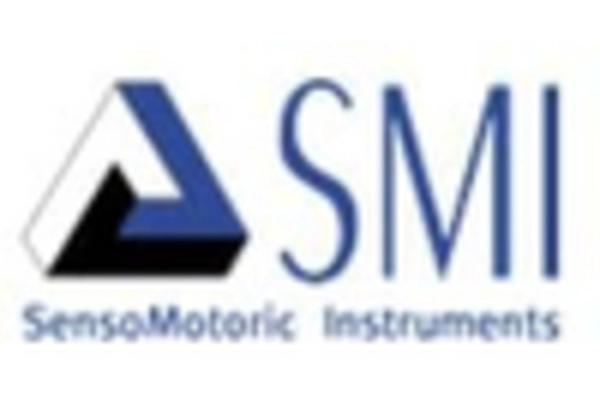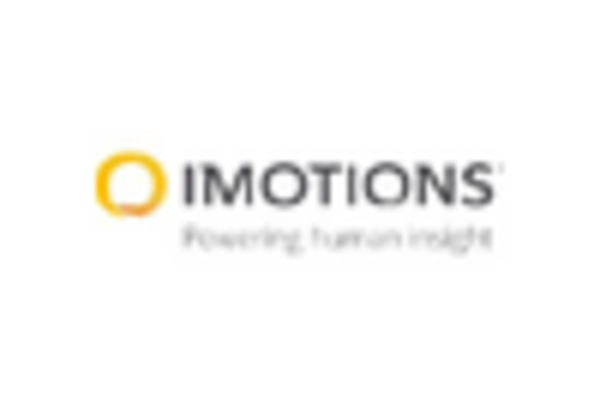Increased Focus on User Experience
The Webcam Eye Tracking Market is significantly influenced by the growing emphasis on user experience across various sectors. Businesses are increasingly recognizing the importance of understanding user interactions and preferences. Eye tracking technology provides valuable insights into how users engage with digital content, enabling companies to optimize their offerings. This trend is particularly evident in sectors such as e-commerce and online education, where user engagement directly impacts success. As organizations strive to enhance user satisfaction, the demand for eye tracking solutions is expected to rise. Market analysts suggest that this focus on user experience will continue to drive growth in the Webcam Eye Tracking Market.
Advancements in Eye Tracking Technology
Technological advancements are playing a crucial role in shaping the Webcam Eye Tracking Market. Innovations in hardware and software have led to more accurate and efficient eye tracking solutions. Enhanced algorithms and machine learning capabilities allow for real-time analysis of user behavior, making these tools more effective for various applications, including marketing research and user experience testing. The market is witnessing a shift towards more sophisticated eye tracking systems that can be easily integrated into existing webcam setups. This evolution not only improves the user experience but also expands the potential applications of eye tracking technology, thereby contributing to the growth of the Webcam Eye Tracking Market.
Rising Demand for Remote Work Solutions
The Webcam Eye Tracking Market is experiencing a notable surge in demand for remote work solutions. As organizations increasingly adopt flexible work arrangements, the need for tools that enhance productivity and engagement becomes paramount. Eye tracking technology, integrated into webcams, allows for improved focus and attention monitoring during virtual meetings. This technology not only aids in understanding user engagement but also provides insights into participant behavior. According to recent estimates, the market for remote work solutions is projected to grow significantly, with eye tracking being a key component. Companies are investing in these technologies to ensure effective communication and collaboration, thereby driving the Webcam Eye Tracking Market forward.
Growing Applications in Healthcare and Rehabilitation
The Webcam Eye Tracking Market is witnessing an expansion in applications within healthcare and rehabilitation. Eye tracking technology is being utilized for various purposes, including assessing cognitive function and aiding in rehabilitation for patients with visual impairments. This technology provides healthcare professionals with critical data on patient engagement and response, facilitating more personalized treatment plans. The increasing recognition of the benefits of eye tracking in therapeutic settings is likely to drive demand in the healthcare sector. As the market for healthcare technologies continues to grow, the Webcam Eye Tracking Market is expected to benefit from this trend, highlighting the versatility and potential of eye tracking solutions.
Integration of Eye Tracking in Gaming and Entertainment
The integration of eye tracking technology in gaming and entertainment is emerging as a significant driver for the Webcam Eye Tracking Market. As the gaming industry evolves, developers are seeking innovative ways to enhance player immersion and interaction. Eye tracking allows for more intuitive gameplay experiences, enabling players to control actions with their gaze. This technology is also being utilized in virtual reality environments, where it can enhance realism and user engagement. The gaming sector is projected to expand rapidly, and the incorporation of eye tracking is likely to play a pivotal role in this growth, thereby positively impacting the Webcam Eye Tracking Market.















Leave a Comment